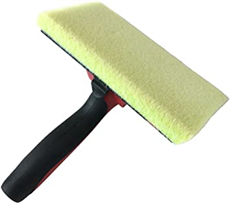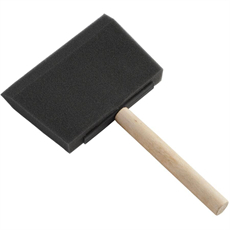The history of paintbrushes dates back thousands of years and reflects the evolution of artistic expression and the development of various painting techniques. Here’s a brief overview of the history of paint brushes:
Early Paintbrushes (Prehistoric to Ancient Times):
-
- The earliest known paintbrushes date back to prehistoric times when humans used rudimentary tools like sticks, animal hair, or plant fibers to apply pigments to cave walls for cave paintings.
- In ancient civilizations such as Egypt, China, and Mesopotamia, brushes made from animal hair, plant fibers, or bird feathers were used for various artistic and decorative purposes.
- Ancient Chinese Brushes (3rd Century BCE – Present):
- China has a rich tradition of brush making and painting. Chinese brushes, known as “huá bǐ” (花笔), have been in use for over two thousand years.
- Chinese brushes are typically made from animal hair, such as rabbit, wolf, or goat, and they come in various shapes and sizes to accommodate different painting styles and techniques.
- Chinese brush painting, a traditional art form, emphasizes brushwork, and these brushes are central to its practice.
- Medieval and Renaissance Europe (5th to 15th Century):
- In medieval Europe, brushes made from animal hair, such as squirrel, sable, or hog bristle, were used for illuminated manuscripts, frescoes, and panel paintings.
- The Renaissance period saw a revival of interest in classical art techniques, including the use of fine brushes for oil painting on canvas and wood panels.
- Modern Era (16th Century Onward):
- The modern paintbrush, with its familiar shape and construction, began to take shape during the 16th century in Europe.
- The use of metal ferrules (the part that holds the bristles) and wooden handles became more common, allowing for greater control and precision in painting.
- Advances in brush manufacturing techniques in the 18th and 19th centuries led to the production of high-quality brushes for various painting mediums, including oil, watercolor, and acrylic paints.
- Contemporary Brushes (20th Century – Present):
- In the 20th century, synthetic bristle brushes became popular as an alternative to natural hair brushes. These brushes are often more affordable, durable, and suitable for water-based paints like acrylics.
- Today, artists have access to a wide range of brush types and materials, including natural and synthetic fibers, designed for specific painting techniques and styles.
- Brushes have also been adapted for digital art, with stylus brushes designed for use on graphic tablets and touchscreen devices.
The history of paint brushes is intertwined with the development of art and painting techniques throughout human history. From simple tools made from natural materials to the diverse and specialized brushes available today, paintbrushes have played a vital role in helping artists express their creativity and bring their visions to life on canvas, paper, and other surfaces.














